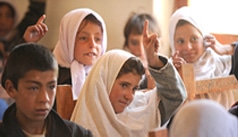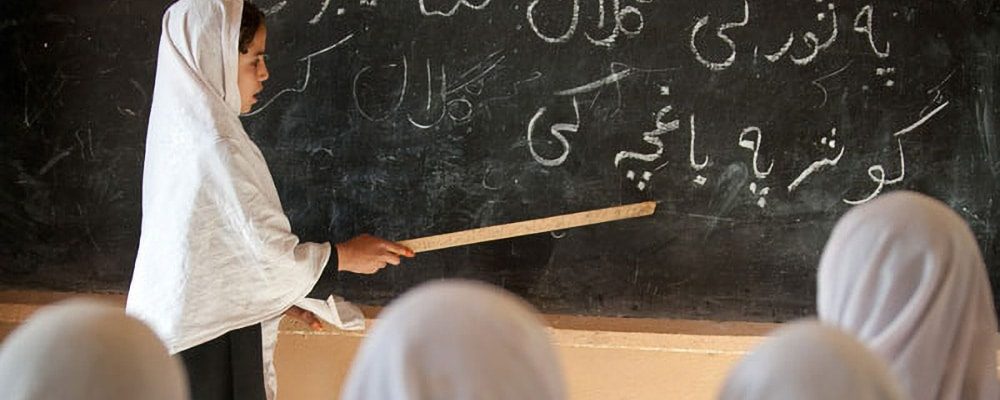Education For Peace: Top 10 Ways Education Promotes Peace
Education Promotes Peace
Over the holidays, we often see images of doves, that well known symbol of peace and tranquility, and we hear mentions of good will towards others and peace on earth. It’s as if hearts around the world soften during this time of year, and family, friends, and gratitude come to the forefront. It’s therefore a time to reinforce the power of education for peace.
Central Asia Institute works towards providing education for girls and women for a number of reasons. Girls’ education has proven to significantly impact a woman’s future, and also the future of her family and her entire community. The reasons to promote education range from a reduction in infant and maternal mortality and child marriage to a reduction in malnutrition and domestic and sexual violence (for more on this, read The Top 10 Reasons to Support Girls’ Education). But there’s one important reason that seems to be extremely pertinent during the holiday season.
Education promotes peace.
Education has been touted as one of the most powerful tools we can implement in our global efforts to promote world peace. Here’s a look at the top 10 ways education promotes world peace.
1 Education Boosts Confidence & Hope
Confucius said it as far back as 500 B.C.: “Education breeds confidence. Confidence breeds hope. Hope breeds peace.” Confidence has been defined as the belief that you can succeed at something and a sense of self assuredness. Knowledge is a key confidence builder; it allows one to feel a sense of accomplishment, to be more fearless, and to grow in unexpected ways. This confidence and self assuredness in turn sparks motivation and optimism—or hope as Confucius says— to work towards peace.
2 Education Promotes Independent Thinking
Education encourages independent thinking, and it opens doors to new ideas. Independent thinkers tend to try to make sense of the world and draw their own conclusions instead of blindly following the beliefs of others. Independent thinkers may be less likely to join militant groups or be followers, and may instead be leaders towards positive change and action.
3 Education Inspires Problem Solving Skills
Along with math skills that are learned in classrooms, students are often challenged to use logical thinking in order to analyze different pieces of literature, the significance of historical events, and scientific findings. Coupled with independent thinking, these critical thinking skills can lead to innovative solutions and alternatives to violence.
4 Education Builds Communication Skills
In the classroom, students are often asked to speak or read in front of others, offer opinions, and break into small groups to work on projects together. This is how communication skills are honed, and communication is they key to solving conflict. Through quality education, students may be armed with the tools to work within their communities to solve problems, or to do so on a global scale.
5 Education Opens Doors
There’s no doubt that education for peace leads to career enhancement, employment opportunities, and chances of higher earnings. What was once out of reach for girls in the remote villages we work with—say becoming a doctor or a lawyer—are now possibilities. And with these careers in place, many come back to work within their communities and support their families, often promoting peace.
6 Education Reduces Poverty
Imagine always being uncomfortable, malnourished, and fearful, not knowing where your next meal will come from if it comes at all. This fear can often lead to anger, and anger to violence. Education, especially when it’s combined with technical training (read more about CAI’s vocational training programs), has been proven to reduce poverty. This is one driving force behind education for peace. With education comes knowledge, power, safety, security, and peace. One study by UNESCO found that income around the world would be 23 percent higher per capita in countries with education for all. If poverty were reduced, violence would follow suit.
7 Education Increases Political Involvement
Educated citizens are less likely to stand for government corruption and can spur more government accountability. For women, education can even the playing field, and they are more likely to participate in political discussions, town meetings, and decision making, therefore leading to a government that represents its citizens more equally. Because educated women are less likely to support terrorism (see number 8), they can promote alternatives through politics.
8 Education Reduces Support of Terrorism & Militancy
According to a University of Maryland School of Public Policy survey, uneducated women are more likely to support militancy and terrorism, and educated women are less likely than their educated male peers to support this way of life. And if a woman doesn’t support it, perhaps she can talk her husband into not supporting it, and then her kids, other family members, and other members of her community.
9 Education Builds Empathy & Tolerance
The Human Rights conventions declare: “Education must prepare a child for responsible life and effective participation in a free society in a spirit of understanding, peace, tolerance, equality of sexes and friendships among all peoples, ethnic, national and religious groups and persons of indigenous origin.” Therefore with quality education, a child can learn the quality of empathy and understanding towards those who are different from them. And they may be more accepting of others and less likely to solve problems with violence.
10 Education Cultivates Respect
In the classroom, students learn to respect their teachers and their peers. They are taught to let others speak and express opinions, not to interrupt, how to deal with stress, and how to conduct themselves within a group setting. Perhaps this learned respect for other humans can be practiced on a global scale, where there’s a respect for each and every life, not just those who share the same religious beliefs and backgrounds.
The Young People’s Chorus of New York City sings a song with the words, “Let there be peace on earth, and let it begin with me.” Through quality education for all, around the world, by promoting education for peace, young people can be the voice of change and peace.
From CAI, we wish you peace and joy this holiday season.












14 responses to “Education For Peace: Top 10 Ways Education Promotes Peace”
So true! Best thoughts always to CAI?
This is the best way of improving our selfs through the quality of education. Your article is beneficial for improving skills development. It gives a good impact on females future and also for the new generation.
So impressive and matured article.
Very informational article
Very informative article. I really enjoyed it
Thank you so much, Sameeha!
Very informative article
very informative
very nice i like it and i have enjoyed the article since is formative one keep on touch
Wow this this things help me to make a nice speech on education for peace and prosperity
Thank you very much to upload this the one who have written it.
This is a very enlightening and concise post. No one could have explained it better.
Agreed, that was a very good read!
I do agree with all the concepts you have presented on your post.
They are very convincing and can definitely work.
Still, the posts are too brief for novices. Could you please prolong them
a bit from subsequent time? Thank you for the post.
Dear Marianne,
I’m so glad you found the post interesting and that you’d like us to share more information. I think that’s a fantastic idea. I’ll share your suggestion with our team and see if we can talk more about these ideas in future posts. Have a wonderful rest of your week and happy Thanksgiving!